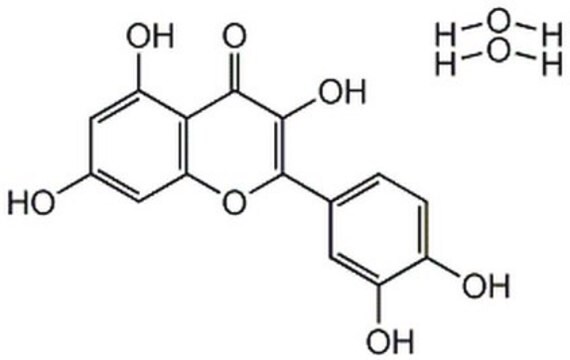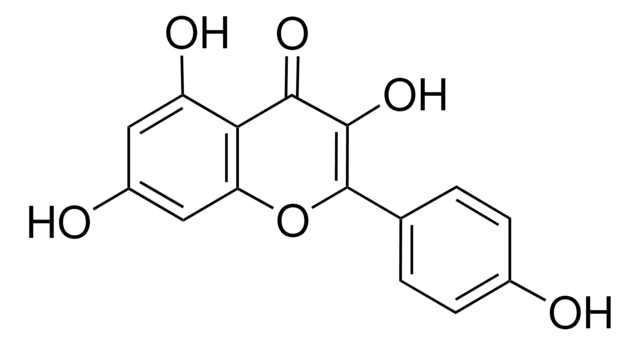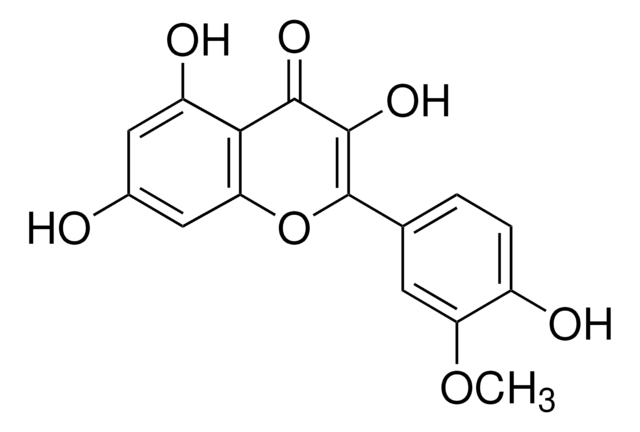00200595
Quercetin dihydrate
primary reference standard
Sinónimos:
2-(3,4-Dihydroxyphenyl)-3,5,7-trihydroxy-4H-1-benzopyran-4-one dihydrate, 3,3′,4′,5,7-Pentahydroxyflavone dihydrate
About This Item
Productos recomendados
grado
primary reference standard
formulario
powder
caducidad
limited shelf life, expiry date on the label
fabricante / nombre comercial
HWI
técnicas
HPLC: suitable
gas chromatography (GC): suitable
mp
>300 °C (lit.)
cadena SMILES
OC(C(O)=C1)=CC=C1C2=C(O)C(C3=C(O)C=C(O)C=C3O2)=O
InChI
1S/C15H10O7.2H2O/c16-7-4-10(19)12-11(5-7)22-15(14(21)13(12)20)6-1-2-8(17)9(18)3-6;;/h1-5,16-19,21H;2*1H2
Clave InChI
GMGIWEZSKCNYSW-UHFFFAOYSA-N
¿Está buscando productos similares? Visita Guía de comparación de productos
Descripción general
Exact content by quantitative NMR can be found on the certificate.
Aplicación
Acciones bioquímicas o fisiológicas
Otras notas
Palabra de señalización
Danger
Frases de peligro
Consejos de prudencia
Clasificaciones de peligro
Acute Tox. 3 Oral
Código de clase de almacenamiento
6.1C - Combustible acute toxic Cat.3 / toxic compounds or compounds which causing chronic effects
Clase de riesgo para el agua (WGK)
WGK 1
Elija entre una de las versiones más recientes:
Certificados de análisis (COA)
¿No ve la versión correcta?
Si necesita una versión concreta, puede buscar un certificado específico por el número de lote.
¿Ya tiene este producto?
Encuentre la documentación para los productos que ha comprado recientemente en la Biblioteca de documentos.
Los clientes también vieron
Nuestro equipo de científicos tiene experiencia en todas las áreas de investigación: Ciencias de la vida, Ciencia de los materiales, Síntesis química, Cromatografía, Analítica y muchas otras.
Póngase en contacto con el Servicio técnico






